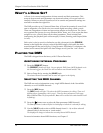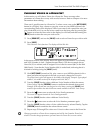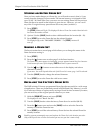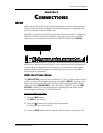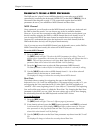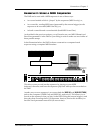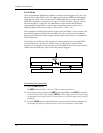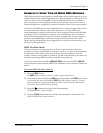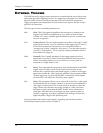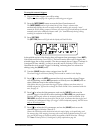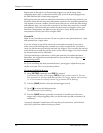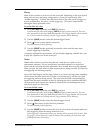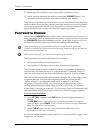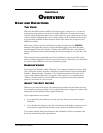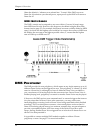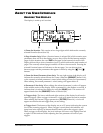
Chapter 3: Connections
18 DM5 Reference Manual
EXTERNAL TRIGGERS
The DM5 has twelve trigger inputs designed to accommodate the most widely used
drum pads and other triggering sources. It’s triggering mechanism is an advanced
Signal-to-MIDI converter which incorporates five user controllable parameters.
Trigger parameters are independent for each of the twelve inputs, and the set up is
global for all Drum Sets.
The five types of user controlled parameters are:
Gain Gain. This is the signal strength that the transducer is sending to the
triggers in the DM5. It’s adjustment is very similar to that of a tape
recorder’s VU meter. With the gain threshold set too low, soft hits may
never be recognized.
VCrv Velocity Curve. There are eight separate curve tables, 0 through 7 which
represent the velocity curve, or sensitivity of the trigger input. Curves 1-
3 have the least amount of sensitivity; curve 4 has the median, or
“average type of play” sensitivity; and curves 5-7 are the most sensitive.
Curve 0 is “Unassigned”. This is a special situation parameter which is
fully explained in page 44.
Xtalk Crosstalk. The Crosstalk parameter is the trigger suppression level
adjustment. It is used to control interaction problems between pads or
drums. Crosstalk problems can occur when two or more pads are
mounted on a single stand or rack.
Dec Decay. This represents the signal decay time and threshold of the DM5’s
trigger inputs. In other words, Decay controls the amount of time
between once a pad has been struck and triggers, to when it will trigger
again from another hit. When properly adjusted, this parameter defeats
“double triggering” by allowing the DM5 to determine which signals
are actual hits, and which are secondary decay signals.
Nois Noise. This parameter allows you to control the noise floor, or the signal
level threshold that an exterior vibration or sound must exceed before it
will trigger a drum sound. This is used mostly in situations where the
stage volume and vibrations are strong enough to “rattle” the drum
hardware to such a point that the DM5 “thinks” these vibrations are
actual hits. With the Noise set too high, you may experience false, or
“double” triggering. A properly adjusted Noise setting will allow the
highest dynamic range for the pad being used.
For more detailed information and examples, regarding the functions of these
individual parameters, please refer to Chapter 5.



